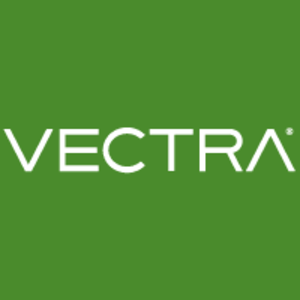Vectra was deployed to give us a view of what is happening on the user network. It helps us to check what is being done by users, if that is compliant with our policies, and if what they're doing is dangerous. It covers cyber security stuff, such as detecting bad proxies, malware infections, and using packet defense on strange behaviors, but it can also be used to help with the assessment of compliance and how my policies will apply.
We also use Vectra to administer servers and for accessing restricted networks.
There are on-prem modules, which are called Cognito Detect, the NDR/IDS solution, which captures traffic. We also have the SaaS data lake, and we also have the Cognito Detect for Office 365, which is a SaaS-type sensor within the O365 cloud.
If we didn't have Vectra and the Detect for Office 365, it would be very difficult to know if our Office 365 was compromised. We tried, in the past, to do it with a SIEM solution consuming Office 365 logs and it was really time-consuming. The Office 365 Detect solution has the exact same "mindset" as the Detect solution for networks. It's almost like we can deploy it in the fire-and-forget mode. You deploy the solution and everything is configured. You have all the relevant alerts out-of-the-box. If you want to, you could tweak, configure, contextualize, and rewrite the parser, because some things might be out of date, and customize the solution. For a big company with a large team it might be feasible, but for small companies, it's an absolute showstopper. The Detect for Office 365 gives us a lot of visibility and I'm very pleased with the tool.
We use three services from Vectra: Cognito Detect, Detect for Office 365, and Cognito Recall, and we are leveraging all these services within the SOC team to have proper assessments. We even use these tools to prepare the new use cases that we want to implement into our SIEM solution. Recall stores all the metadata that is brought up from Cognito Detect at a central point, data-lake style, with an elastic stack and a Kibana interface available for everybody. Using this, we can try to see what are the general steps.
Without this, I would not have been able to have my SOC analyst do the job. Creating a data lake for cyber security would be too expensive and too time-consuming to develop, deploy, and maintain. But with this solution, I have a lot of insight into my network.
An additional thing that is very convenient with the Recall and Detect interfaces is that you can do use cases involving individuals in Recall and have them triggered in Detect. For example, we found ways to track down if users are trying to bypass proxies, which might be quite a mess in a network. We found a type of search within Recall and have it triggering alerts in Detect. As a result, things can be managed.
It's so efficient that I'm thinking about removing my SIEM solution from our organization. Ours is a small organization and having a SIEM solution is really time-consuming. It needs regular attention to properly maintain it, to keep it up and running, consume all the logs, etc. And the value that it's bringing is currently pretty low. If I have to reduce costs, I will cut costs on my SIEM solution, not on Vectra.
The solution also provides visibility into behaviors across the full life cycle of an attack in our network, beyond just the internet gateway. It provides a lot of insight on how an attack might be coming. There are multiple phases of an attack that can be detected. And there is a new feature where it can even consume intelligence feeds from Vectra, and we can also push our own threat-intelligence feeds, although these have to be tested. The behavioral model of the Detect solution also covers major malware and CryptoLockers. I know it's working. We tested some cases and they showed properly in the tool. I'm quite reassured.
It triages threats and correlates them with compromised host devices. One of the convenient things about Detect is that it can be used by almost anybody. It's very clear. It's quite self-explanatory. It shows quadrants that state what is low-risk and what is high-risk. It is able to automatically pinpoint where to look. Every time we have had an internal pen test campaign, the old pen test workstation has popped up right away in the high-risk quadrant, in a matter of seconds. To filter out false positives it can also provide rules that state, "Okay, this is the standard behavior. This subnet or this workstation can do this type of thing." That means we can triage automatically. It also has some features which aren't so obvious, because they are hidden within the interface, to help you to define triage rules and lower the number of alerts. It looks at all your threat or alert landscapes, and says, "Okay, you have many alerts coming from these types of things, so this group of workstations is using this type of service. Consider defining a new, automated triage rule to reduce the number of alerts."
To give you numbers, with my SIEM I'm monitoring some IDS stuff within my network. Everything is concentrated within my SIEM. From my entire site, IDS is giving me about 5,000 more alerts than my Vectra solution. Of course it will depend on how it is configured and what types of alerts it is meant to detect, but Vectra is humanly manageable. You don't have to add something to make the triage manageable, using some time-consuming fine-tuning of the solution, requiring expertise. This is really a strong point with Vectra. You deploy it, and everything is automatically done and you have very few alerts.
Its ability to reduce false positives and help us focus on the highest-risk threats is quite amazing. I don't know how they made their behavioral or detection models, but they're very efficient. Each alert is scored with a probability and a criticality. Using this combination, it provides you insights on alerts and the risks related to alerts or to workstations. For example, a workstation that has a large number of low-criticality alerts might be pinpointed as a critical workstation to have a look at. In fact, in the previous pen test we launched, the guys were aware that the Vectra solution was deployed so they tried some less obvious tests, by not crawling all the domain controllers, and things like that. Because there were multiple, small alerts, workstations were pinpointed as being in the high-risk quadrant. This capability is honestly quite amazing.
And, of course, it has reduced the security analyst workload in our organization, on the one hand, but on the other it has increased it. It reduces the amount of attention analysts have to pay to things because they rely on the tool to do the job. We have confidence in its capability to detect and warn only on specific things of interest. But it also increases the workload because, as the tool is quite interesting to use, my guys tend to spend some time in Recall to check and fix things and to try to define new use cases. Previously, I had four analysts in my shop, and every one of them was monitoring everything that was happening on the network and in the company on a daily basis. Now, I have one analyst who is specialized in Vectra and who is using it more than the others. He is focusing on tweaking the rules and trying to find new detections. It brings us new opportunities, in fact. But it has really reduced the workload around NDS.
In addition, it has helped move work from our Tier 2 to our Tier 1 analysts. Previously, with my old IDS, all the detection had to be cross-checked multiple times before we knew if it was something really dangerous or if it was a false positive or a misconfiguration. Now, all the intelligence steps are done by the tool. It does happen that we sometimes see a false positive within the tool, but one well-trained analyst can handle the tool. I would say about 20 to 30 percent of work has moved from our Tier 2 to our Tier 1 analysts, at a global level. If I focus on only the network detections, by changing all my IDS to Vectra, the number is something like more than 90 percent.
It has increased our security efficiency. If I wanted to have the same type of coverage without Vectra, I would need to almost double the size of my team. We are a small company and my team has five guys in our SOC for monitoring and Tier 1 and Tier 2.
It reduces the time it takes for us to respond to attacks. It's quite difficult to say by how much. It depends on the detections and threat types. Previously, we had an antivirus that was warning us about malicious files that were deployed on a workstation within one year. Now, we can detect it within a few minutes, so the response time can be greatly enhanced. And the response time on a high-criticality incident would go from four hours to one hour.




